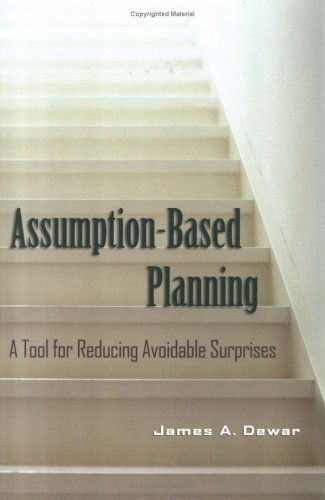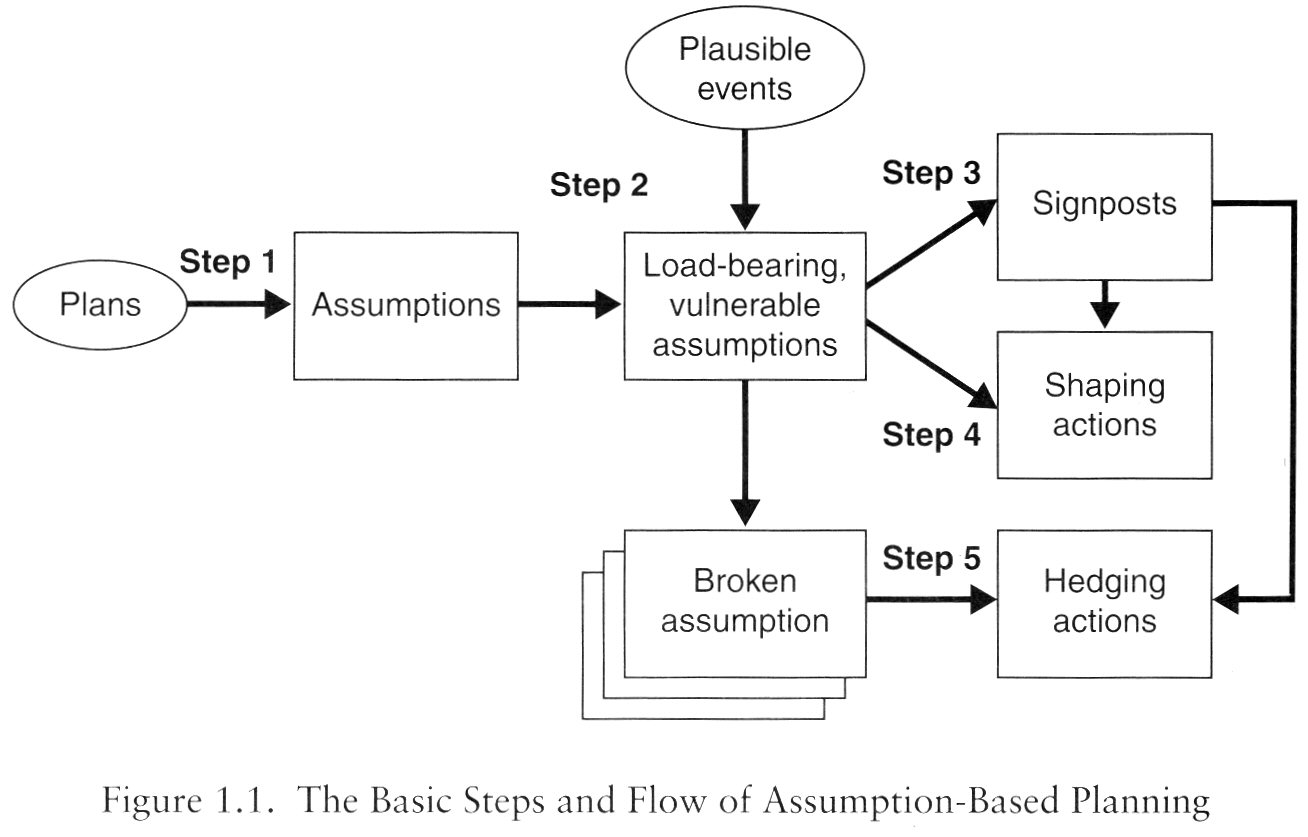

James Dewar
Cambridge University Press, 2002
ISBN 0521001269
Buy it from Amazon.com (commission paid)
Buy it from Amazon.co.uk (commission paid)
ABP is a technique used by business executives to peer into the future. In so doing, it deals with assumptions, things that are taken (rightly or wrongly) to be true in the world, and actions, things that are to be done if the assumptions come true, and equally or more importantly, things that are to be done if they do not. There is an obvious parallel (to a requirements person anyway -- perhaps the first law of assumptions is that obviousness varies!) with requirements and domain statements in the world, and specifications for designing and building a system.
ABP comes from the RAND corporation, home of the use of imagined 'alternative future worlds' or static Scenarios for planning. It is like and yet unlike; it focuses not on the future worlds themselves, but on what assumptions underly your imagination of the future.
Dewar claims to be an unwilling author, preferring to be a practical mathematician and consultant; but he writes clearly, fluently, and persuasively. The key concepts are elegantly few, and they serve as powerful conceptual tools for improving plans. ABP, in fact, is not so much a planning process as a re-planning process: it sharpens plans by questioning them and forcing planners (and more importantly, decision-makers) to look at how their plans could fail. That is in terms of plausible events that could break the assumptions on which the plan rests.
There are two components to risk -- the probability of an event (such as a failure), multiplied by its seriousness should it occur. Remarkably, Dewar lays aside all his mathematics and simply focuses on identifying which assumptions matter, ie are 'load-bearing' for the plan; and which could plausibly fail, ie are 'vulnerable'. These are the key assumptions. There is one assumption underlying this approach: that failures are single-point, so that the failures of assumptions can be considered one at a time. This won't do, of course, for complex safety-critical systems, where all the easy paths to failure were taken care of long ago, and five or more causes are now needed to create a serious accident.

Having identified plausible events, the planner's task is to identify suitable Signposts that warn that these events are taking place, so that something can be done about them. That something could be a shaping action, if the organisation is capable of shaping events in some way; or a hedging action, to soften the effects if the worst should happen.
The book is narrated in an enjoyably reflective way, and illustrated throughout by the possibly rather too trivial example of a lemonade stand (which won't sell much if it's rainy on the day). Other illustrations, told anecdotally, are more serious, being from the Cold War and concerning nuclear planning for the defence and/or destruction of the world. On a happier note, Shell correctly identified its assumption that the oil price would not fall dramatically, and weathered the low oil price shock of the late 1970s much better than other oil companies through careful hedging actions taken in advance.
This is an excellent and stimulating book of obvious importance. A client said that it was better than many days of management consultancy; and to a requirements person, it is suggestive of a range of worthwhile and practical approaches. Dewar strongly influenced my thinking in the Rationale chapter of Discovering Requirements, by the way. Students, managers, planners, and systems engineers should all read Dewar attentively. It's a book that grows on you.
© Ian Alexander 2005, 2009
You may also like: